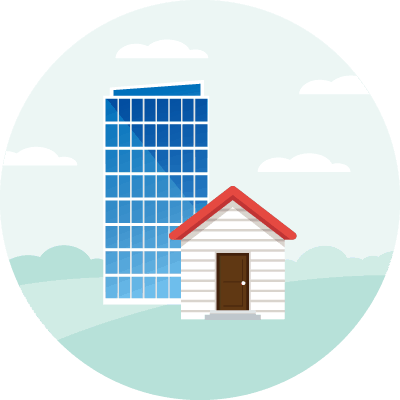What is a Single Family Residence?
Single Family Residences Explained
 The term “single family residence” (often referred to by the acronym SFR) is sort of a misnomer. It appears to describe a place where one family lives. That, however, is not what this real estate term means.
The term “single family residence” (often referred to by the acronym SFR) is sort of a misnomer. It appears to describe a place where one family lives. That, however, is not what this real estate term means.
Although single family residences are typically intended for one family, unrelated adults can share a single family residence. It is not the occupants who define a single family residence; it’s the features of the home that do.
Single family residences are the most common type of home on the market and the most common home type listed on the Multiple Listing Service (MLS). As of 2019, the most homes sold in the United States were detached single family residences, at 83%.
Advantages of a Single Family Residence

More space: Single family residences are typically larger than townhomes and condominiums. Families who need lots of living and storage space might prefer a single family residence. Most single family residences typically have a yard as well. Families with children and/or pets, as well as gardeners and people who wish to have a private swimming pool, usually want a home with a yard.
More flexibility: People who wish to make extensive renovations or improvements typically find it easier to do with a single family residence. Major renovations are usually more cumbersome in townhouse or condo communities with a homeowner’s association (HOA), as the homeowners may be required to get approval for each project.
Entertaining space: People looking for an entertainment home to host family get-togethers or parties usually have more space in which to do so in a single family residence.
More privacy: Because a single family residence does not share walls and maintains a certain distance from other homes, the living situation is more private and usually quieter than it would be in a townhouse or condo development.
Disadvantages of a Single Family Residence
Single family residences have some disadvantages as well:
High maintenance: The repairs and maintenance responsibilities of single family residences fall entirely on the homeowner. This typically includes landscaping duties, roofing, and exterior painting, among others, whereas townhouse or condominium owners can often rely on their HOA to handle these exterior improvements and maintenance items.
Access to amenities: Although people who own a single family residence can add amenities such as a pool or a home gym, they need the money and the space to do so. Those types of amenities are often included in multifamily dwellings.
Location: Single family residences are often located in suburban and rural areas. They can be found in urban locations as well, but if they are, they may be significantly more expensive. People who want the convenience and vibrancy of city life will typically live in townhouses, condos, co-ops, or apartments.
Not as travel friendly: When owners of single family residences travel, they typically need to make arrangements for someone to maintain the yard and to keep an eye on the home, since an empty single family residence can be an invitation for crime and unwanted attention. Townhomes and condominiums are often referred to as “lock-and-go living,” meaning residences can just lock up and leave.
RELATED: 16 Reasons to Invest in Single-Family Home Rental Properties






